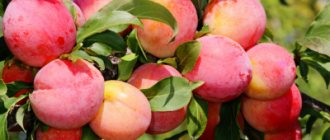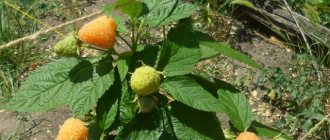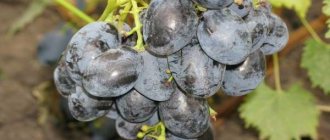Cantaloupe melon in Russia is not as widespread as other sweet species from the Pumpkin family. The culture was better known in Italy and France. There is a legend that the seeds of the strange fruit were brought to the Pope during the Renaissance. The vegetable began to be grown on the Cantalupo estate, near Rome. This is where sweet melon gets its name. Cantaloupe then spread throughout the world. Only in the 21st century did gardeners begin to grow this variety of melon everywhere in Russia. The plant has time to ripen and produce tasty fruits with a special aroma if you take care of the seedlings and cover the tender seedlings from the beginning of the growing season in open ground.
Origin story
Italy is considered the country of origin of Cantaloupe, but the birthplace of melon is Central and Central Asia, from where it was brought in the 15th century as a gift to the Pope. And since then they began to grow it in the province of Cantalouppia, from where it borrowed its current name.
Today this melon variety is grown throughout Europe and America. In Russia, it was somewhat forgotten, although in pre-revolutionary times there was a separately bred litter - Cantaloupe Moscow.
The Cantaloupe variety is the ancestor of almost all melon varieties currently grown in Europe.
Description of the plant
Cantaloupe or Musk or Thai melon belongs to the genus Cucurbitaceae, the cucumber family.
Table of main characteristics of the variety:
| Selection | Growing season, days | Fruit weight, kg | Fruit diameter, cm | Productivity, kg/sq. m | Lightness, class |
| 14th century, Armenia | 80 | 0,5-1,5 | 20-30 | 3-3,3 | 3 |
Cantaloupe has the following distinctive external features:
- The stems spread along the ground, branched and powerful.
- The leaf is dark green in color, large with a carved, hard plate.
- The fruits can be round, oval, slightly flattened, depending on the variety and growing conditions.
- The skin of the fruit is often rough, covered with a net-like relief pattern, but in some species it can be smooth. Color from orange, yellow to green.
- A distinctive feature of the pulp is its pronounced musky aroma. The color may be yellow or dark orange. Fruits with green skin have a creamy color.
- The size of one fruit in circumference does not exceed 30 cm. Weight varies from half a kilo to one and a half kilos.
- The ripening period of the fruits is considered mid-season; the harvest is harvested at the end of summer. Some hybrid varieties may be early ripening.
- The variety is not demanding on growing conditions and care, so it grows well both in the southern regions and in the middle zone.
You can see the Cantaloupe melon variety in the video below:
Use in cooking
Despite the small size of the Cantaloupe melon, culinary specialists around the world unanimously note its good taste and excellent aroma. This is what led to its wide distribution in various regions, from Asia to North America. Cantaloupe has a short shelf life, but even during this time the entire harvest can be processed. And its culinary uses are very wide.
Dried Cantaloupe Melon
Dried cantaloupe cantaloupe retains all the beneficial vitamins and microelements in which it is so rich. Its pulp contains riboflavin, folic acid, retinol, ascorbic and nicotinic acids - a real storehouse of useful substances. Making dried melon yourself is quite difficult, but it can be easily purchased at any store that sells dried fruits.
Pictured above is dried honeydew melon. This product retains its natural bright color, characteristic melon aroma and is an excellent substitute for artificial sweets.
Dried Cantaloupe Melon
Like dried, dried Cantaloupe is quite common in stores. You can try to prepare this product yourself by cutting the pulp of a ripe fruit into small pieces and drying them under the sun. They can be consumed as a sweetener, and also used as a filling for pies. Pieces of dried melon can be added to compotes or yoghurts.
Candied Melon Cantaloupe
Cantaloupe melon fruits have a pronounced aroma and excellent taste. In addition to valuable microelements, they contain beta-carotene. This is the only variety of melons with the presence of this substance in its composition. Candied fruits are widely used as a sugar substitute because they contain sucrose.
Chemical composition and beneficial properties
Cantaloupe melon fruits are classified as dietary products due to their low calorie content - only 34 cal per 100 g of product.
You can find many useful substances and vitamins in the composition:
- carotene – good for the skin and vision;
- inosine – recommended for use for obesity, hair loss, and to lower cholesterol;
- choline – improves memory, useful during pregnancy;
- zeaxanthin – increases the body’s protective properties from ultraviolet radiation, prevents cardiovascular diseases;
- fiber – has a positive effect on the gastrointestinal tract;
- sucrose (2 times more than in watermelon) – promotes the normal functioning of the liver, brain, muscles, and nervous system;
- vitamin C (3 times more than in watermelon) – improves the functioning of the immune system;
- silicon – takes part in the formation and growth of bone and connective tissues;
- iron (2 times more than in a chicken egg) – prevents the development of anemia;
- potassium – stabilizes blood pressure.
Advantages and disadvantages
Positive qualities of the variety:
- the dense peel prevents the fruits from cracking in conditions of high humidity;
- grows well in areas with humid summers and average temperatures;
- resistance to melon crop diseases such as powdery mildew;
- ripens faster compared to Asian varieties;
- high taste qualities.
Disadvantages include:
- relatively short shelf life (up to a maximum of 2.5 months), it is recommended to consume raw within 3-4 weeks after collection;
- during hot periods, watering is necessary;
- small fruit size.
Hybrid varieties
For a long time, Cantaloupe was grown in its natural form. But from the middle of the 20th century, new hybrids began to be successfully developed. The goal is to improve and enrich the taste of the variety.
We will describe the most successful varieties below.
Iroquois
Bred from Eastern American cantaloupes. The plant is distinguished by the thickness of its stems. The leaves are large, dark green. The fruits are oval in shape. The peel is covered with a coarse mesh. Weight when ripe reaches 1.7 kg. Sugar content – not less than 12%.
The variety is classified as mid-season. Harvesting should be done on time and the fruits should not be allowed to overripe.
It is resistant to many diseases.
Charente
A variety from France.
The fruits are the smallest in size among all Musk Melon varieties, but have a distinct taste and aroma. The shape resembles slightly flattened balls. The peel has longitudinal grooves and a smooth texture.
Early ripening variety. Grown in protected soil conditions.
Blondie
A relatively new variety developed from Charente. The hybrid adapts well to different growing conditions: climate, soil, humidity.
The plant develops powerful stems, but the fruits are not large, up to 600 g. A distinctive feature is the absence of a mesh pattern on the skin. The fruits are oval or flattened in shape.
The ripening period is average, 80-90 days.
Melon of this variety resists various diseases well and is not affected by root rot.
Gaul
Developed by Israeli scientists.
The variety is similar in appearance to Cantaloupe. A distinctive feature is the pistachio-colored pulp. Medium sized fruits.
The main value of the variety is its good tolerance to various climatic conditions - it thrives in high humidity and during periods of drought. Also, the variety is resistant to low temperatures and major diseases.
Refers to crops of medium ripening period.
Oksana
A hybrid with large fruits (up to 4-5 kg), oval in shape, yellow in color. The skin is covered with a thick mesh, the flesh is white, creamy, juicy with sourness. The stem is medium tall.
This melon variety can be grown in open ground or under agrofibre. It has good resistance to common diseases.
The ripening period is early (1.5-2 months).
Fruits can be stored for a long time without losing their presentation.
Rules of care
In order for the plant to develop normally, it needs to be provided with quality care. It must be comprehensive.
Watering mode
The plant needs abundant watering, especially during periods of drought. At the same time, you should avoid accumulating water between the rows. This will lead to damage to the fruits and stems.
In hot weather, foliage may appear wilted or withered. However, this does not mean that the plant needs more liquid. By evening it adapts to new conditions. It is important to avoid getting moisture on the stem. In this case, there is a risk of its damage.
Formation
In order for the crop to turn out beautiful, it should be pinched in time. This will allow the formation of side branches. It is worth fertilizing the plant during the period of active growth. For this purpose, nitrogen fertilizers are used. After the end of flowering and during the formation of the ovary, products based on potassium and phosphorus are used.
To prevent the stems from touching the ground, they are tied. Qualified gardeners use low trellises. For developing fruits, support must be provided.
Diseases and pests
Sometimes a culture encounters dangerous pathologies and parasites. This leads to a decrease in yield and death of the plant.
Downy mildew
It can be recognized by yellow spots on the foliage. To avoid the spread of the disease, fungicides are used - in particular, Chlorthalonil.
Microspherella rot
In this case, the vine becomes brittle. A yellowish liquid appears in the fracture area. The disease cannot be cured. The affected crop should be removed and the soil treated with fungicides.
Fusarium wilt
The disease can be identified by gray spots. Affected crops should be destroyed and the soil treated with fungicides.
Nematodes
Nodes on the root system and stems will help identify the problem. Getting rid of parasites is difficult.
Aphid
Black coating on the leaves helps identify insects. It has a sticky consistency. In such a situation, insecticidal agents are used - Actellik, Karbofos.
Spider mite
Infection with parasites can be detected on a thin web that entangles melon leaves. At the initial stage, it is worth picking off the infected leaves and spraying the crop with acaricides.
How to grow in a garden?
Cantaloupe melon can be grown in your backyard garden. Next, we’ll look at what to pay attention to so that the fruits have time to ripen and please with the harvest.
Deadlines
First of all, you should choose a variety that is suitable for growing in your region of residence.
To do this, you need to consider:
- Warm period of the year. Most varieties require 2-3 hot summer months for the fruits to ripen. But today there are varieties for growing in cool summer conditions.
- Terms of ripening. For regions with short and cool summers, choose early varieties; for the south, medium and late varieties are suitable.
- Sowing time. Seeds can be planted for seedlings in April. The seedlings are transferred to the ground after a month and a half. Or you can sow directly into open ground at the end of May.
Site selection and crop rotation
Next, you should consider a place for sowing seeds. Consider the following factors:
- The soil. Melon will grow well in loamy and sandy soils with an acidity (pH) of approximately 6.
- Drainage. Necessary for growing most varieties of melons. Water should not stagnate between rows.
- Room to grow. Melons have spreading, creeping branches, so you should select a fairly large bed.
- Location. Melons love sunny places with protection from the wind. The best option would be the southern part of the site, if possible - on a slope. A hedge or canopy crops (sunflower, corn, peas) will be good protection from the wind.
- Supports. Needed if you plan to tie the melons (when growing varieties with small fruits). You don't have to worry about this and let the melons ripen on the ground.
- Neighbors in the garden . Melon can be planted together with cucumbers, zucchini, and pumpkins. Many gardeners are frightened by such a neighborhood, since there is an opinion that melon is cross-pollinated with pollen from other plants. But this is not true. The following are considered good neighbors: leaf crops, radishes, radishes, turnips. Unfavorable neighbors are potatoes and beets.
- Predecessor cultures. It’s good if grains, legumes, white cabbage, garlic, onions, and cucumbers grow in the area in front of the melons. All types of pumpkins, tomatoes, and carrots greatly weaken the soil and are not recommended as predecessors for melons.
In the bed where Cantaloupe grew, it is not recommended to re-grow melons for 5 years.
Sowing pattern and depth
Before planting in the ground, carry out the preparatory work:
- Digging is primary. Dig the soil to a depth of 30-35 cm. Remove stones, branches and other foreign objects from it (can be done in the fall).
- Warming up the soil. To do this, cover the selected area with film in April and leave until the next stage of processing. In order for the seeds to grow and develop well, the soil must warm up to +18 °C.
- Fertilizer. Apply fertilizer to the site at the rate of 3 kg of humus or 7 kg of manure per 1 square meter. m.
- Repeated digging, loosening . Re-dig the soil and thoroughly loosen it.
Now you should act in accordance with what material will be planted.
Sowing seeds
Sequence of work:
- Preparing the holes. Divide the area into rows every 130-140 cm. In each row, make holes 4-5 cm deep, at a distance of 70-90 cm from each other.
- Sowing. Place 3-4 seeds in each hole.
- Sealing holes. Fill the holes with soil, creating small mounds above the surface.
Planting seedlings
The best period for planting seedlings at home is 10 days before the last night frost. Follow the weather forecast and choose the right time.
The method of planting seedlings is used in cold climates.
Next you will need:
- Biodegradable pots. It is recommended to use special peat or other bio-pots so as not to damage the delicate root system when planting. Make sure you purchase the required quantity.
- Priming. Fill the pots with nutritious soil. It is best to take one specifically designed for seedlings.
- Sowing. Place 3-4 seeds in each pot.
- Watering. Water generously with room temperature water. Be careful not to over-water the soil and create standing puddles.
- Seed germination. After germination and the appearance of true leaves, thin out the seedlings, leaving the strongest stems.
When the threat of frost has passed and the soil has warmed up well, the seedlings can be transferred to the garden bed. To do this, use the same diagram as when sowing seeds. Plant seedlings in the holes, along with a bio-pot.
Watering and fertilizing
Cantaloupe melon is easy to care for, but needs regular watering, especially during dry periods. Do not pour water on the roots themselves, they may rot. It’s better to make a hole in the ground nearby and pour water into it. If water has accumulated between the rows, it is necessary to stop watering or make a ditch to allow it to drain. If the leaves look a little withered in the heat, you need to increase watering.
Watering and fertilizing
If the plant puts out many side branches, it must be pinched, leaving only two.
During the season you can feed the plant, but no more than 3 times:
- twice before flowering (with nitrogen fertilizers);
- once during flowering (potassium and phosphate fertilizing).
Some experienced gardeners recommend using leftover coffee grounds as fertilizer.
Additional Information. To improve the quality of the fruit, you can leave only one fruit on one vine and remove all other ovaries.
When the fruits ripen, you need to stop watering so that they gain sugar. As a rule, the period falls at the end of August - beginning of September. A ripe melon is checked by the stalk; with a slight touch it easily falls off. At the same time, it emits a strong aroma. At first, the skin of the melon is green, then it acquires a beige or light orange tint.
While the plant is small, it is necessary to regularly loosen the soil and remove weeds, otherwise they will choke the melon sprouts and slow down its growth. Thai Cantaloupe melon can be tied to a small horizontal trellis, and to prevent heavy fruits from tearing off the stems, it is worth placing a support under them.
How to care?
Melon is an unpretentious plant, but it still needs to be looked after regularly.
Temporary shelter
Immediately after planting in the ground, make a shelter for the plant. It will be needed until the melon blooms. When the first flowers appear, it will need to be removed so as not to interfere with pollination by insects.
Temporary shelter promotes faster plant growth and allows you to harvest 2-3 weeks earlier.
When constructing a shelter, pay attention to:
- Choice of material. Gardeners use plastic film or spunbel (non-woven garden material) for frame shelter, or cover each hole with a cut PET bottle with a volume of at least 5 liters. The choice of shelter is yours.
- Frame construction. An arched wire frame is suitable. Install it at a height of 50-60 cm above the rows.
- Access to plants. When constructing a shelter, you need to remember that in the first 3 weeks of growth, until the stems get stronger, they will have to be constantly weeded. Take care of the removable part of the structure for access to the sprouts.
- Thinning of seedlings. If the melon was planted from seeds into the ground, thin out the seedlings, choosing the healthiest plants after the appearance of true leaves.
Watering
Cantaloupe melon is demanding on the frequency and volume of watering, which largely depends on weather conditions and the growth phase.
Do not allow the soil to dry out or become waterlogged.
Irrigation rates in hot weather:
- watering time - morning and evening;
- water volume – 4 liters for each bush.
Irrigation rates in wet weather:
- watering time - 1 time in the morning or evening;
- water volume – up to 3 liters per plant.
In rainy weather , stop watering.
After the fruits reach technical maturity (unripe, green fruits that have reached full size), watering is reduced by half.
7-10 days before harvesting, the melon stops watering completely.
Cantaloupe melon is not suitable for sprinkling irrigation.
When watering, pay attention to:
- Water temperature. It should be from +22 °C. This promotes slower evaporation of moisture.
- Distance to the root collar. You need to pour water into pre-made holes or grooves at a distance of 5-7 cm from the root collar. This will protect it from rotting.
Top dressing
Components that are necessary for good growth and development of melon fruits:
- nitrogen;
- phosphorus;
- potassium;
- calcium;
- sulfur.
Apply fertilizing throughout the entire growth period and adhere to the following recommendations:
- 1st feeding . Apply complex mineral fertilizer (for example, “Master” microfertilizer, according to the instructions) when 3-4 true leaves appear on the sprouts.
- 2nd feeding . A solution of rotted compost in the proportion of 3 kg per 10 liters of irrigation water, apply 2 liters to each plant a week and a half after the first feeding.
- 3rd feeding. Apply nitrogen fertilizer (20 g of ammonium nitrate per 10 liters of water) at the rate of 2 liters of solution for each sprout. Duration: 10 days after the second feeding.
- 4th feeding . Prepare a solution of 3 parts water and 1 part ash, pour it over the plants at the rate of 1.5-2 liters of fertilizer for each bush. It should be applied one and a half or 2 weeks after the third feeding.
- 5th feeding . Organic fertilizer, for which a solution of humus, humus or droppings is suitable. Dilute 3-4 kg of organic matter in 10 liters of water.
You can add another fertilizing during the period of ovary formation. To prepare it, take 25 g of superphosphate, 5 g of saltpeter and 10 g of potassium chloride, dilute the mixture in 5 liters of warm water.
Formation of bushes
The formation of bushes is a necessary procedure to save the plant’s strength on the growth of stems and direct it into the formation of fruits.
There are 2 formation methods.
B raised
It is a simple method, as it does not involve the installation of additional structures.
Sequence:
- Immediately after removing the protective cover, pinch the main stem at the level of the 4th leaf.
- Select 2 strong side shoots and pin them to the ground.
- The remaining shoots are pinched at the level of the 5th leaf.
In the trellis
The method involves installing a frame structure.
Order of conduct:
- After planting the plants in the ground, install stakes on both sides of each row.
- Pull a thick cord between them at a height of 1.8-2 m.
- Tie to this cord and lower it down to each hole of the rope.
- After the plant has formed 3-4 true leaves, pinch off the top.
- Use a loose loop of rope to tie the main stem along the bottom edge.
- Leave the 2 strongest shoots on the bush, remove the rest.
- When the ovaries are formed, pinch the shoots at a distance of 3 leaves from them.
- As the bush grows, it will stretch along the rope up to the trellis.
Soil care
Soil care includes 3 activities:
- Loosening. After planting, loosen the soil once a week to a depth of 5 cm. When the melon begins to bloom, reduce the amount of loosening to once every 1.5 weeks and increase the depth to 10 cm.
- Weeding. Weed regularly, as necessary, carefully removing weeds from the soil along with the roots.
Weeding is recommended to be carried out together with loosening to reduce the risk of damage to the root system.
- Hilling. Apply after side shoots appear on the main stem. Gently rake the soil under the root collar.
Possible problems
There are usually no problems with Cantaloupe. But sometimes it can be affected by diseases, pests and bear fruit poorly.
Melons grown indoors are more often susceptible to pests and diseases.
Diseases
Diseases, their signs and methods of treatment:
- Downy mildew. It is manifested by the appearance of yellow spots on the leaves. A fungicide, such as chlorothalonil, will help eliminate the problem. Tie up melons to prevent the spread of disease.
- Mycospherellosis rot. The stems break and yellow-orange liquid flows from the cracks. The harvest will most likely not be harvested. After harvesting, treat the field with a fungicide. Next year, plant another crop in this place.
- Sclerotial southern rot. Melons rot after rain. Often the cause is heavy soil. Reduce the amount of watering and add mulch between the rows. Read more about soil mulching here.
Pests
Melons can be affected by the following insect pests:
- Nematodes. Knots appear at the roots and the stems look swollen. Next year, plant rye in the bed where the melons grew.
- Aphid. Leaves become sticky and wilt. Use insecticides such as Theodan. You can treat the plants with a mixture of essential oils or laundry soap.
- Mole miner. Gnawed holes appear on the leaf blades. This insect will not affect the quality of the crop in any way, so there is no need to fight it.
- Spider mite. The leaves turn yellow and become covered with cobwebs. If the infection is mild, no action needs to be taken. If the lesion is very severe, the only way to combat it is to get rid of the melons.
Poor fruiting
Melons do not bear fruit well for several reasons:
- Cold soil. If the soil is not warm enough at the time of planting, only male flowers will form on the melon. Monitor the soil temperature before planting.
- There are no pollinating insects. If there are few pollinating insects in the region, or you are growing melons in a greenhouse, hand pollinate them.
If all care measures have been carried out correctly, but the melons still do not bear fruit, try sowing rye in the garden 30 days before planting the melons.
Diseases and pests
Cantaloupe is immune to melon and melon diseases. According to gardeners, infections rarely affect it, but it does happen.
Most often, melon suffers from root rot and powdery mildew. To avoid plant contamination, it is important to disinfect all garden tools, follow the rules of watering and crop rotation, and do not plant other melons and melons next to the pumpkin.
As a more serious preventative measure, plants are sprayed with Bordeaux mixture or a light pink solution of potassium permanganate. These remedies will also help at the very beginning of the development of diseases. Bushes that are completely damaged by infection are removed and burned.
To protect the melon from pests, its leaves are sprinkled with tobacco. It is useful to spray the above-ground part of the plant with a soap solution (1 piece of soap per bucket of water).
Inspecting the foliage, you can notice yellow spots. This indicates that the plant has been affected by a disease - powdery mildew. Tying melons serves as a preventive measure against this disease. Despite the fact that the variety is highly resistant to various diseases, it sometimes suffers from:
- powdery mildew;
- root rot;
- aphids;
- spider mite.
Having discovered one of the problems, it is necessary to spray the plant with folk remedies or chemicals. As a preventive measure against certain diseases, it is recommended to plant rye next to melons.
If the plant's stems break and a yellowish-orange liquid flows from them, this indicates mycospherella rot. It is very difficult to cope with and the plants may die. Next year the soil needs to be treated with a fungicide.
After heavy rains, southern rot may appear, in which case you need to mulch the soil to reduce rot.
Harvesting
Harvesting does not take place simultaneously from the entire garden bed. You can collect fruits from one bush 4 to 6 times.
Melons are harvested as they ripen.
To determine if a melon is ripe, pay attention to the following characteristics:
- Aroma. In ripe melons it is distinct, tender and pleasant.
- Pedicel. Cracks appear around it. Ripe melon is easily separated.
- Peel. If you press on a ripe fruit, the peel will be slightly crushed under your finger.
Harvest early in the morning or late in the evening. Do not remove the picked fruits from the garden immediately, but leave them in the rows for 10-14 days. Turn them over every 4 days. This method increases shelf life.
How to choose ripe cantaloupe melon
Muscat melon harvesting usually begins at the end of summer. To determine the full maturity of cantaloupe, pay attention to the characteristic color of the peel. You can choose a ripe melon based on the condition of the fruit, which should be easily separated from the stalk.
If you have to make a choice in the store, you can determine ripeness by scratching the peel a little with your fingernail. If it gives in easily, then the fruit is mature enough. However, if the melon is too soft and your finger can easily sink into the pulp, you should refuse the purchase, since such a specimen is already overripe.
Reviews from gardeners
★★★★★
Elena, 45 years old. I didn’t believe that southern melons would grow in our climatic conditions.
But, despite my skepticism, I was pleased with the Cantaloupe variety. I planted seedlings in peat cups. Germination was approximately 90%. By the time of planting in the ground, about 20 days later, the sprouts already had 4-5 leaves. Care during the summer consisted of forming bushes, loosening and watering on very hot days. The first melon ripened in mid-August and pleased with its sweet taste and aroma. ★★★★★
Ivan, 55 years old. Every year we plant something special in the garden.
In the past, we decided to plant melons. The choice fell on the Cantaloupe variety. They were planted immediately in open ground under a film cover. The sprouts were forming well, but here we made one mistake - it became a pity to pinch them. As a result, there was a lot of ovary, but the fruits did not have time to ripen. Hide
Add your review
Cantaloupe melon has a subtle musky aroma and tender flesh. Although the variety is southern, it grows and bears fruit well in cool climates. Care during the growth period consists of loosening the soil, forming bushes and ovaries, weeding, timely application of fertilizers and watering. Ripe melons can be stored for up to 2.5 months.
0
0
Copy link











